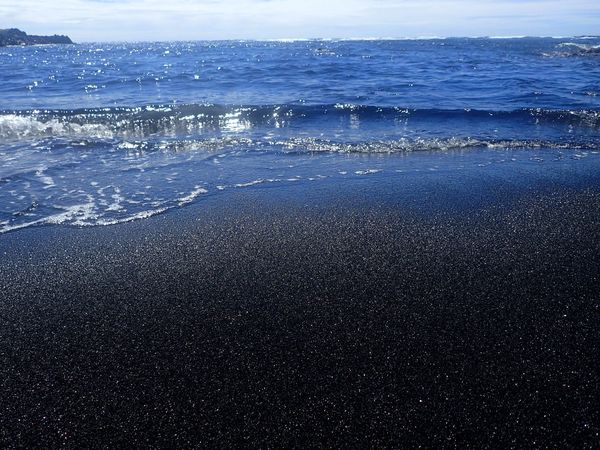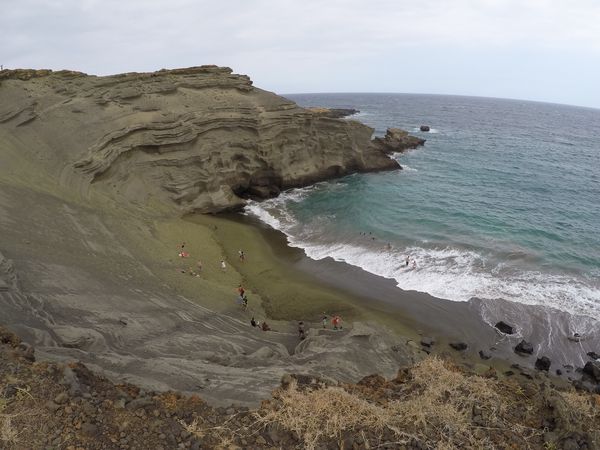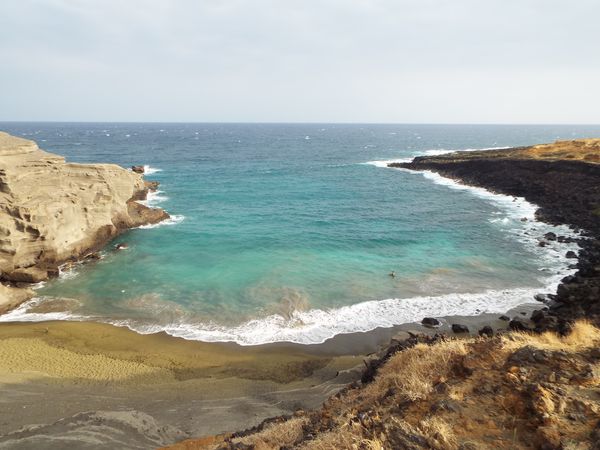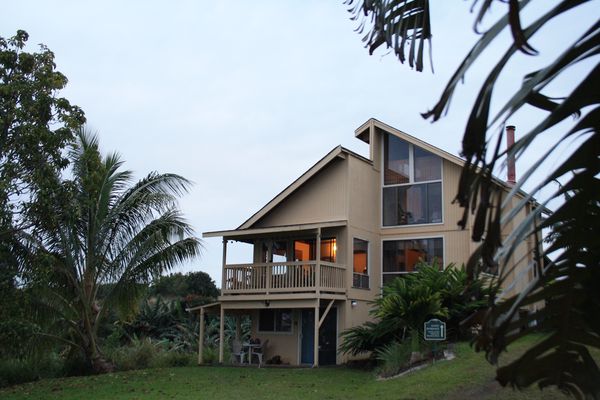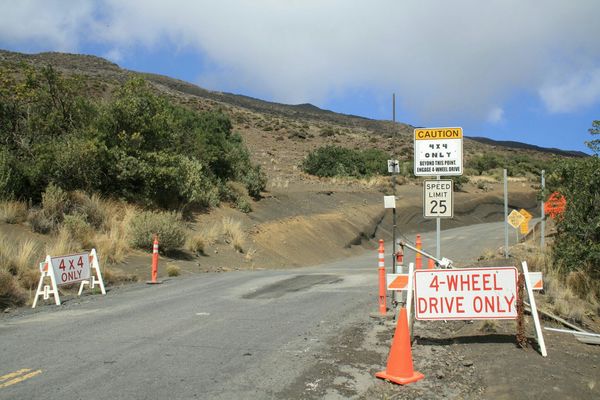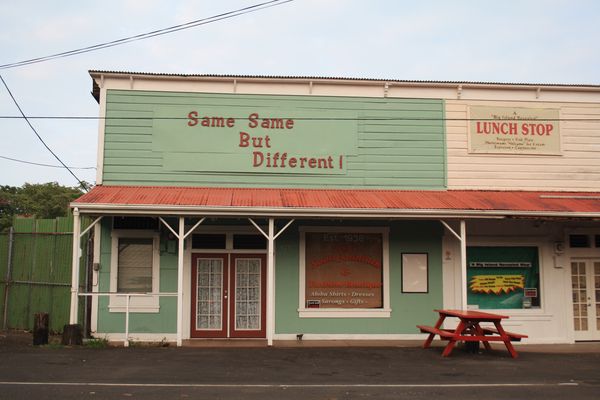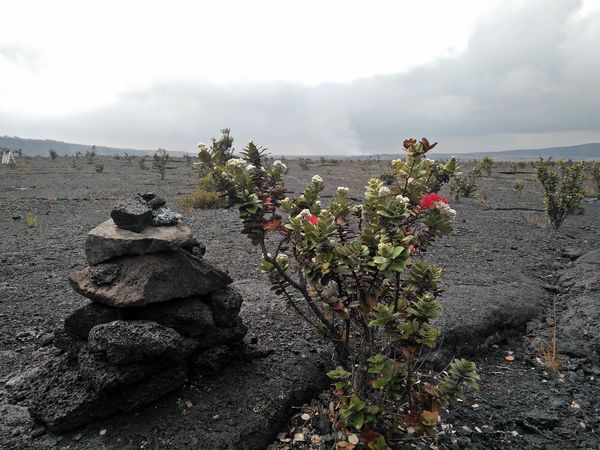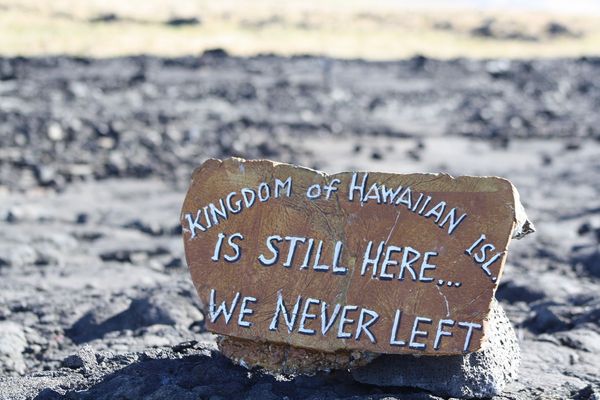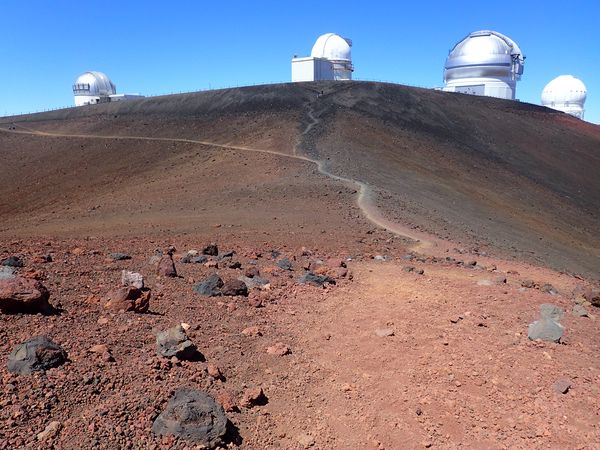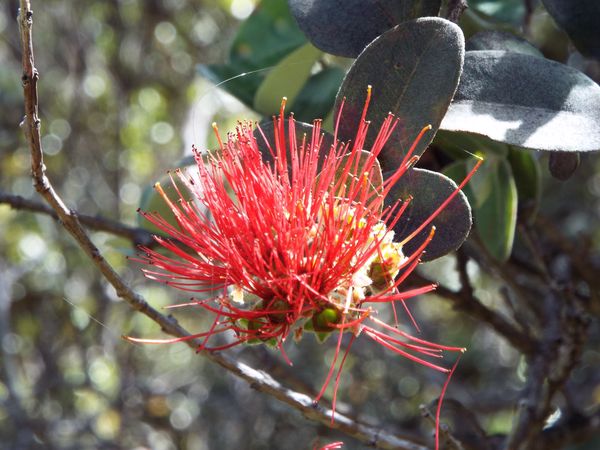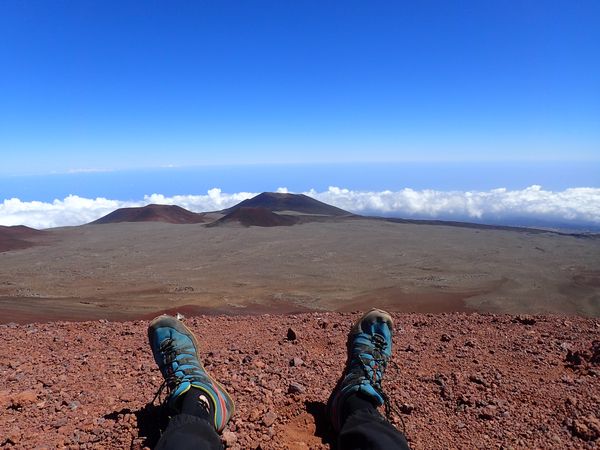Big Island adventures
Random
United States
What struck me most about Hawai’i is its diversity. You can go from lush rain forests to desert-like climate in a couple of hours, from sea level to 4200-meter high volcano peaks and back. You can walk across endless lava fields, over land that’s probably younger than yourself or just relax on one of the picture-perfect beaches. The sand comes in all colours: white (stereotyped in songs and movies), black (lava) and green (olivine mineral from the lava). If you picture a beach from a tourist brochure of paradise, Hawai’i comes pretty close.
I spend five nights in Honoka’a, a quaint little town of a few houses in the lush rain forest off of Hilo. Sleeping in a hammock is a challenge during the first night and a heavenly pleasure from thereon. In fairness, though, at the end of each action-packed, eventful day, I could have probably slept anywhere.
Hawai’i is made up of eight islands, with Hawai’i, also called Big Island, being, you guessed it, the biggest. Starting from Hilo, I use the first day to drive around the northern part of it. It’s my first encounter with Saddle Road, a windy, often foggy highway traversing the island from east to west. It’s been built during WWII with military use in mind, and for many years driving on it has been explicitly ruled out in most rental car contracts. Times have changed, and large sections of the road have been reconstructed, turning it into a mostly straight, multi-lane highway. It’s still an impressive ride, and without noticing it, I quickly gain altitude. Saddle Road gives me a first glimpse of the scale of the two big volcanos, Mauna Loa and Mauna Kea. When I look at my landscape photographs from the trip, many seem to have a tilted horizon. Luckily, this isn’t caused by an inability to hold my camera straight, but merely the result of the very long and flat increase of a volcano covering most of the island, towering 4200 vertical meters above sea level (and reaching another 5000 below).
I drive up to the Mauna Kea visitor centre at 2700 meters and contemplate continuing all the way to the summit. A forest of signs points out the absolute necessity of a four-wheel drive for the road ahead. I doubt that (I think it would be tough on most 2WD cars, but probably doable), but the chance of getting stuck in a rental car, somewhere between 3000 and 4000 meters high on a volcano on my very first day still makes me turn around and head to Waialea Beach instead. Given the beauty of Hawai’i’s beaches, this is not a bad alternative – at all.
Back at my guesthouse, I meet Stephan, a German working in China and his wife. We realise we have similar plans for the next day, and they invite me to join them in their 4WD car.
First, we visit the Volcano national park. After taking a short tour of the unique flora and fauna of Hawai’i, we quickly decide to take the hike down to the Kilauea crater. Standing amid an active volcano, with sulphur gases rising in the not so far distance, is a very unique experience. The good thing is that on Hawai’i, even the volcanoes are laid-back. More significant activities usually don’t come without warning.
Next up is what turned out to be my absolute favourite place of the trip: Papakolea or Green Sand Beach. My guide book describes the road there like this:
If you have 4WD, you might be able to drive it. It’s 2 1/4 miles each way on the flat but sometimes deeply rutted, grassy plain. Sometimes even timid 4WDers can make it. Other times, you’ll want to bring along four sumo wrestlers to help you carry your car out of the ruts. – Big Island Revealed
We have a big Jeep, and Stephan steers it effortlessly through the sand dunes (you can’t call this a road), all the while grinning like a child delighted to play with his newest toy. When I compliment him on his driving, he matter-of-factly tells me that he used to drive rally cars back in Germany.
After another 30 minutes of bumpy joy using a jeep for what it’s been built for, we arrive. Stephan parks the car on top of a cliff, and we eagerly walk down to the beach.
Papakolea is beautiful; the unique colour comes from olivine, a mineral common in Hawaiian lava. It’s a bit cloudy when we arrive, and the sand looks more brown than green. When we’re about to leave, the sun comes out and unveils just how beautiful (and green) this place really is.
On the way back, we stop at South Point, and I take the chance to leap off the southernmost tip of the U.S. into the endless ocean below. The 10-meter plunge is the easy part. Climbing back up on a small metal ladder, swaying with the waves and the wind, turns out a little harder. It’s quite a good arm work-out. Nevertheless, I have to go for a second round; it’s just too much fun.
The next day we visit Mauna Kea. Equipped with a 4×4 going up is no big deal (compared to Green Sand Beach, this is actually a road). A random but interesting fact about Summit Road is that it’s gravel for the middle section but paved around the visitor centre and near the observatory on top. This is because cars whirl up dust, which is not what you want when looking at the sky with some of the world’s best telescopes.
From the parking lot on top, it’s a short 10-minute walk to the actual summit, and I get a first glimpse of how my body reacts to 4000 m altitude without a good acclimatisation process. However, Mauna Kea is just a warm-up for the real challenge awaiting me on the other side of Saddle Road.
Hawai’i has been a beautiful trip and a wonderful, albeit short, vacation. Travelling has shown me many beautiful places worldwide, but ultimately I’ve always left with the knowledge that there’s no better place than home. More than any other place so far, Hawai’i is challenging this idea.
